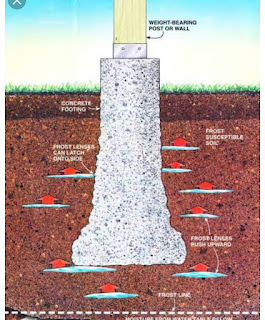Foundation Engineering part 1
Foundation
The part of the structure which is safely transfer the load of the structure on soil is called sub structure. Sub- structure is usually called foundation
Types of foundations
Foundations are broadly classified into two categories:
(1)- Shallow foundation
(2)- Deep foundation
(1)- shallow foundation
When the ratio of depth of the foundation D to the width of foundation B is equal to or less than 1.is known as shallow foundation
(2)- Deep foundation
When the ratio of depth of the foundation D to the width of foundation B is greater than 1.is known as shallow foundation.
Types of shallow foundation
(1)- Spead footing
(2)- Strap footing
(3)- Combined footing
(4)- Mat or raft footing
(5)- Continuous footing
(1)- Spead footing
This is the most common type of foundation and can be square, rectangular or circular in Shape .It is also called an individual column footing.
(2)- Strap footing
In this footing ,two isolated spread footing of two columns are connected by a beam.it is called a strap footing and the beam is called strap beam .Strap beam does not transfer any load to the soil as it is not in contact with the soil .
(3)- Combined footing
A combined footing is generally constructed when two or three columns are located very near to each other.The shape of combined footing may be rectangular.
(4) Mat or raft footing
A mat footing is a type of combined footing that covers the entire area below a structure and supports all the walls and column.
(5)- Continuous footing
Continuous footing also known as a strip footing. A continuous footing is provided for a load bearing wall. Continuous footing is made of bricks .the length of continous footing is usually much larger than the width of the footing.
Factor affecting the depth of shallow foundation
(1)- thickness of top layer
If the foundation is to be construed in soil which has good percentage of vegetables and organic decaying mater, then it is to be placed below the thickness of this organic matter. As this type of organic soils undergo considerable volume change on application of external laod.
(2)- Ground freezing
When the soil water turns to ice due to temprature falls below 0 degree centigrade then this is called ground freezing. Ground freezing has significant impact on foundation due to frost heave ,in which there is an upwards movement of ground due to formation of underground ice .
(3)- Depth of volume change
Some soil undergo volume changes due to alternate wetting and drying, like black cotton soil .In such soil , foundation should be located below the zone of volume change.
(4)- Depth of scour
The depth of scour below the river-bed level around bridge elements in alluvial streams can be very large depending on flow, pier and sediment characteristics. The foundations of bridge piers should therefore have a great depth below the river-bed (up to 50 m) in case of large rivers.
(5)- Ground water level
Seasonal fluctuations such as floods or heavy rainfalls can
raise the water table up to or beyond the footing level and
produce additional settlements of shallow foundations. The soil
loses its stiffness when submerged, and settles more. Substantial
additional settlement may occur when the groundwater level
changes, which can exceed the tolerable limit for settlement .
(6)- Underground utilities and defects
Underground defects affects the footing location that also includes caves, mines and faults. The human-made discontinuities especially underground cables, sewer lines and utilities must be taken into consideration while locating the footings. Minor breaks in the bedrock also acts as underground defects, which creates problem only when they are active.
(7)- Property line and adjoining structures
It is a factor that has to be considered for location and depth of the foundation. It is important to locate the foundation properly in both vertical and horizontal way. The adjacent structure and property line often affects the horizontal location of footing.
The existing footing may be damaged by the new foundation constructed nearby the existing structure. As a result of the vibration, blasting, damage done by excavation, the lowering of present water table will happen. After the addition of the new foundation, pressure develops fie to the new structural load placed on the soil. This may tend to cause settlement of existing structure under the new stress pattern that exist in the surrounding soil
(8)- Slopping ground
When the foundation is to be located on a sloping ground,the depth of foundation should be such that a line drawn from the bottom edge of the foundation at angle of 30 degree and at a horizontal distance of 90 cm should not intersect.







Comments
Post a Comment